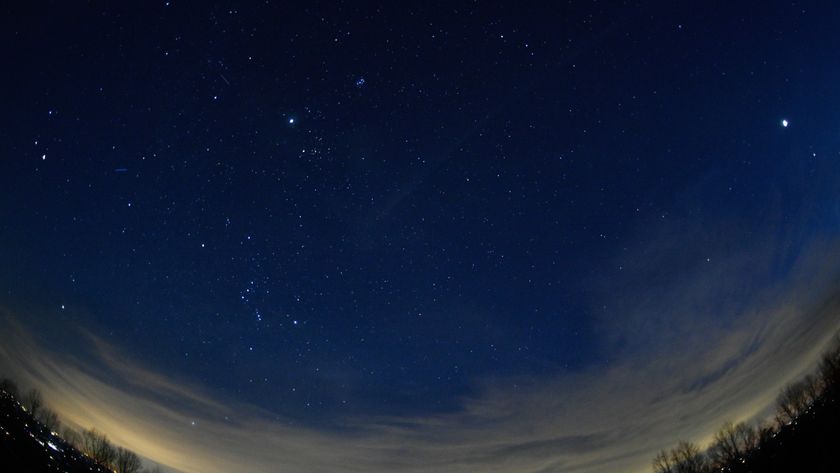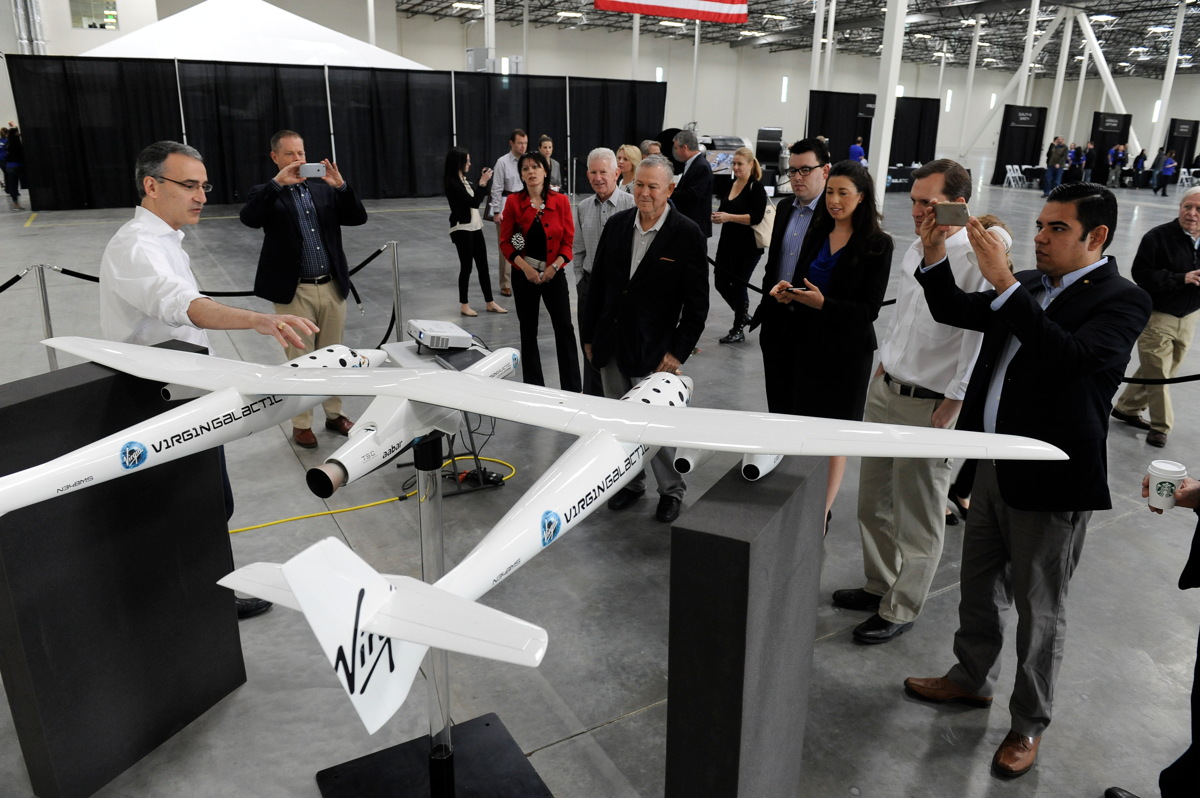
LONG BEACH, Calif. — Virgin Galactic opened its latest commercial spaceflight facility this month to build a new rocket capable of launching small satellites into orbit.
In a ceremony here on March 7, Virgin Galactic unveiled its 150,000-square-foot (46,000 square meters) plant to be the home base for the firm's new LauncherOne operations. LauncherOne is a satellite boost system that will be carried to high altitude by the now-familiar WhiteKnightTwo aircraft. This is the same craft that carries SpaceshipTwo, but these missions will ferry satellites, not humans. LauncherOne detaches at altitude and completes a journey into orbit.
The inaugural event saw about 7,000 people arriving for the ribbon cutting and job fair. On a small stage outside the massive building, George Whitesides, Virgin Galactic's CEO, stood with local dignitaries, including Dana Rohrabacher, a California congressman, to welcome the crowd. [Virgin Galactic's LauncherOne Rocket in Photos]
"It's great to see you!" he began. "It's an exciting day for Virgin Galactic," he continued before getting cut off as the PA system went silent. After swapping for a hard-wired microphone, Whitesides was back on the air. Commenting on the glitch, he said, "Redundancy is important in the space community. Long Beach, we have no problem!" In response, the crowd roared in approval.
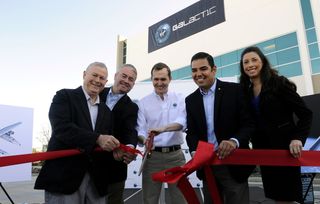
"You would think with all the rocket launches happening today, the chances to go to space would be better. Well, it is if you have a lot of money and a lot of time to wait in line to hitch a ride to space," Whitesides continued. "Not only are we going to open access to space for people, but we are also going to send small satellites into space, and do it more cheaply and more quickly through the LauncherOne small satellite launcher."
Virgin Galactic estimates that LauncherOne will carry 500 lbs. (230 kilograms) to low-Earth orbit, or about 265 lbs. (120 kg) to sun-synchronous high orbit, for less than $10 million. Already planned missions include the launches of global broadband-access satellites and asteroid-hunting orbital observatories.
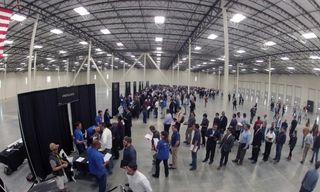
After a few more comments from the assembled dignitaries, job seekers moved inside the new facility to explore employment opportunities.
Get the Space.com Newsletter
Breaking space news, the latest updates on rocket launches, skywatching events and more!
The plant resembles a hangar, and is where the new LauncherOne will be assembled. The announced closing of Boeing's nearby C-17 facility recently hit the aerospace community of Long Beach, so the new Virgin Galactic presence is welcome, promising to replace some of the lost jobs.
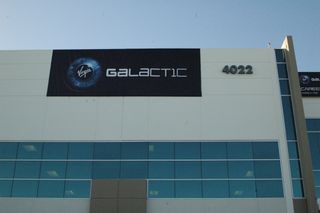
"I used to work for Boeing, and I'm here to get a new job with Virgin. I'm thrilled that they have opened for business right in my backyard," said Akiko Murakami, a job seeker who arrived soon after the plant opened.
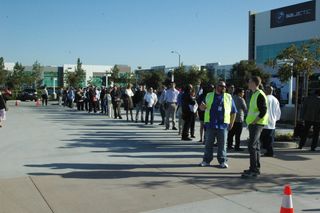
"We expect to grow the Launcher One program to 200 to 250 positions in the next two years," said Christine Choi, a company spokesperson. "It's important to note that there are a wide variety of jobs, including engineers and technicians. And, of course, there are still plenty of jobs [available] up in Mojave," she added, referring to Virgin Galactic's original facility, the Mojave Air & Space Port, still operating in the California desert about 120 miles (190 kilometers) to the north.
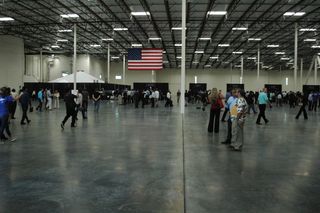
"This will transform space transportation," said Rohrabacher after the ceremonies were concluded. "Someday, you'll be able to take passengers from Los Angeles to Australia in a half hour … It's all very exciting."
Follow us @Spacedotcom, Facebook and Google+. Original article on Space.com.
Join our Space Forums to keep talking space on the latest missions, night sky and more! And if you have a news tip, correction or comment, let us know at: community@space.com.

Rod Pyle is an author, journalist, television producer and editor in chief of Ad Astra magazine for the National Space Society. He has written 18 books on space history, exploration and development, including "Space 2.0," "First on the Moon" and "Innovation the NASA Way." He has written for NASA’s Jet Propulsion Laboratory, Caltech, WIRED, Popular Science, Space.com, Live Science, the World Economic Forum and the Library of Congress. Rod co-authored the "Apollo Leadership Experience" for NASA's Johnson Space Center and has produced, directed and written for The History Channel, Discovery Networks and Disney.


